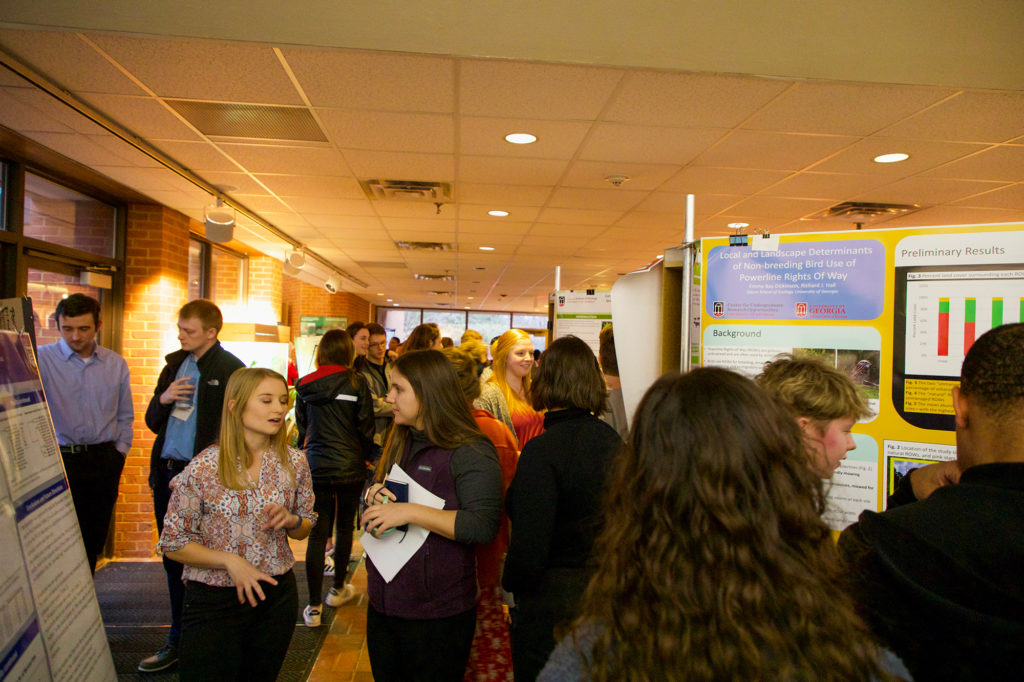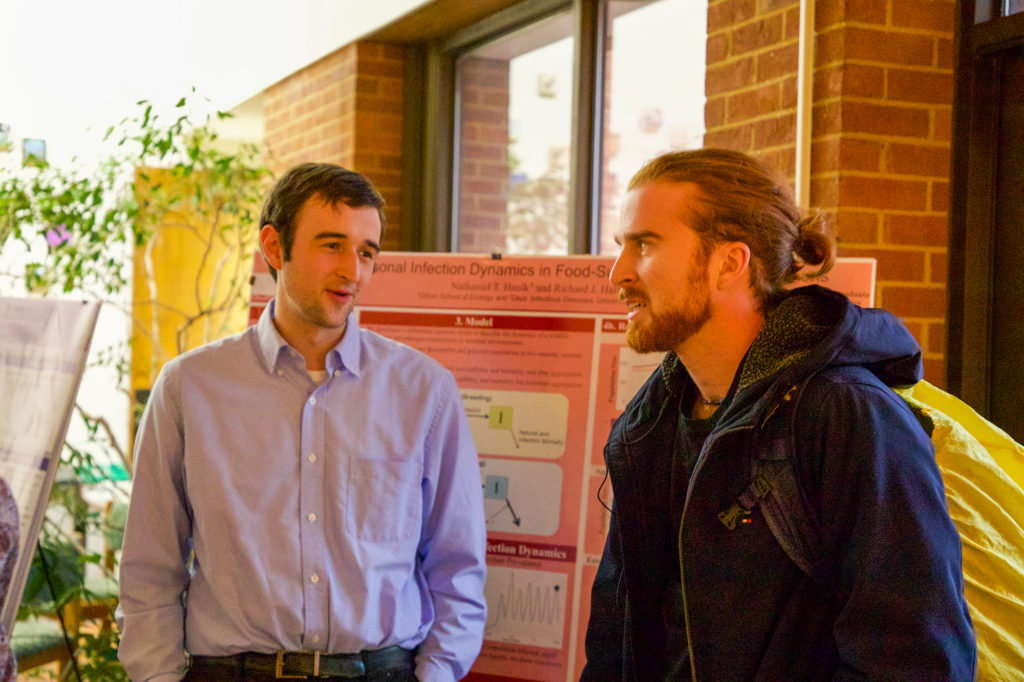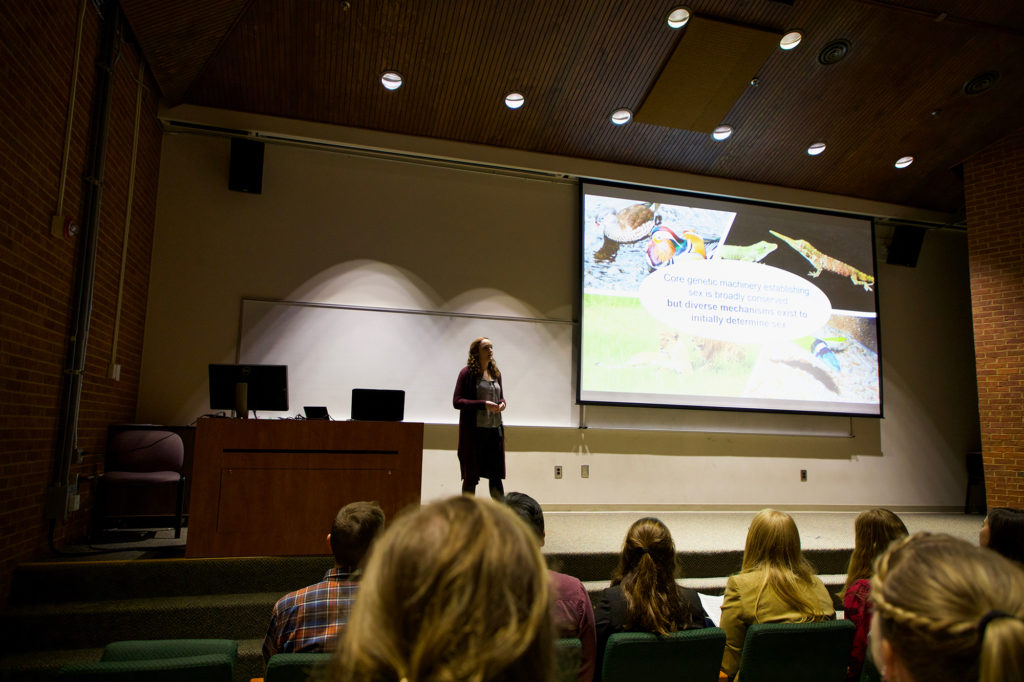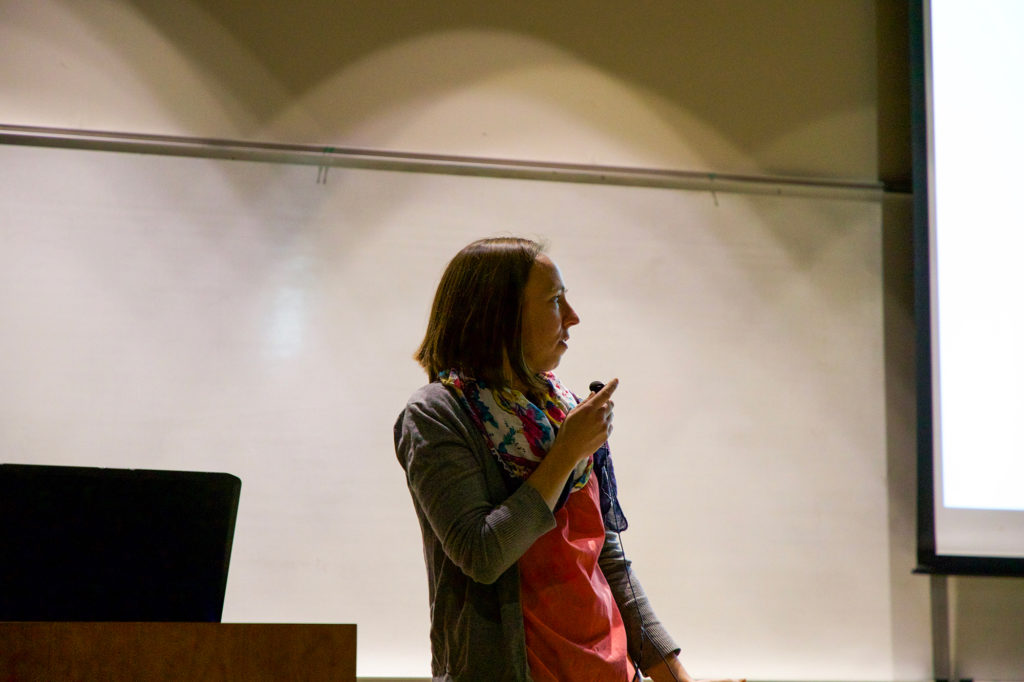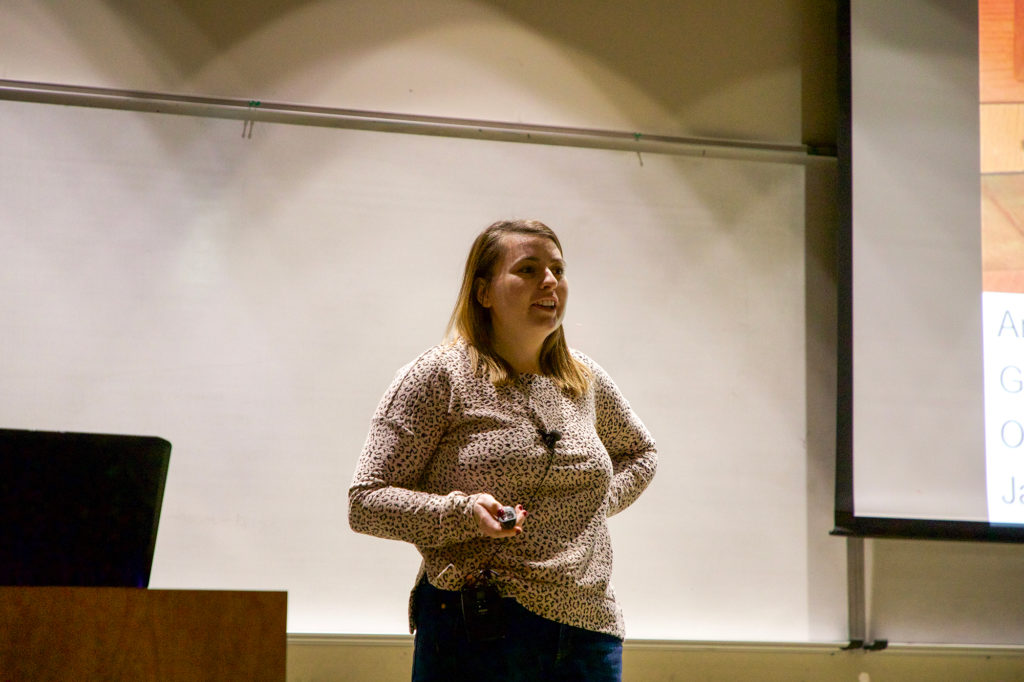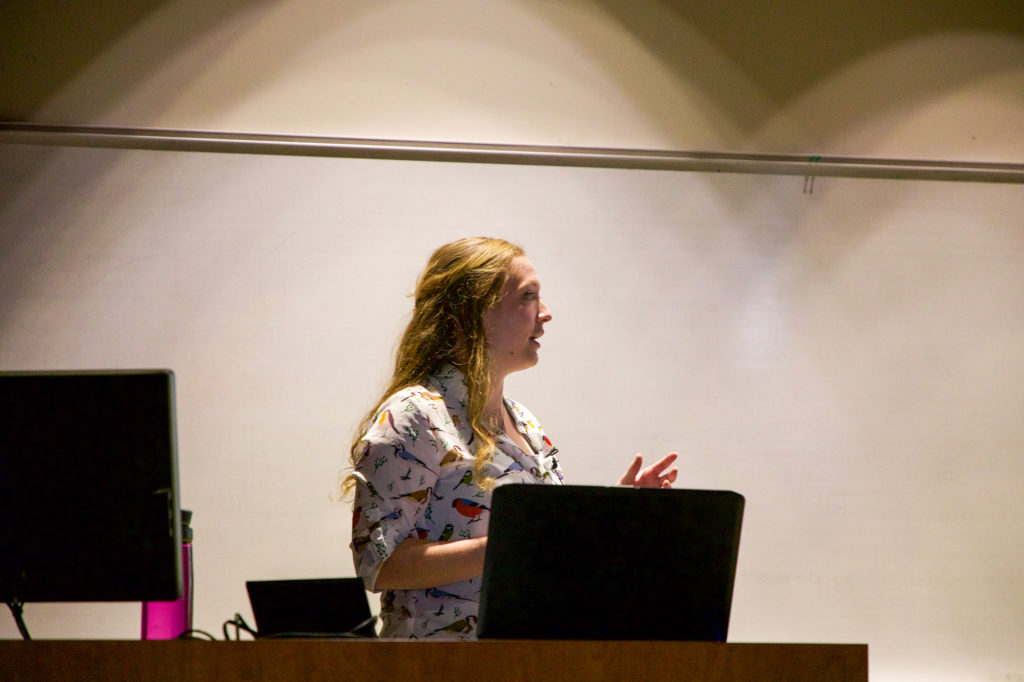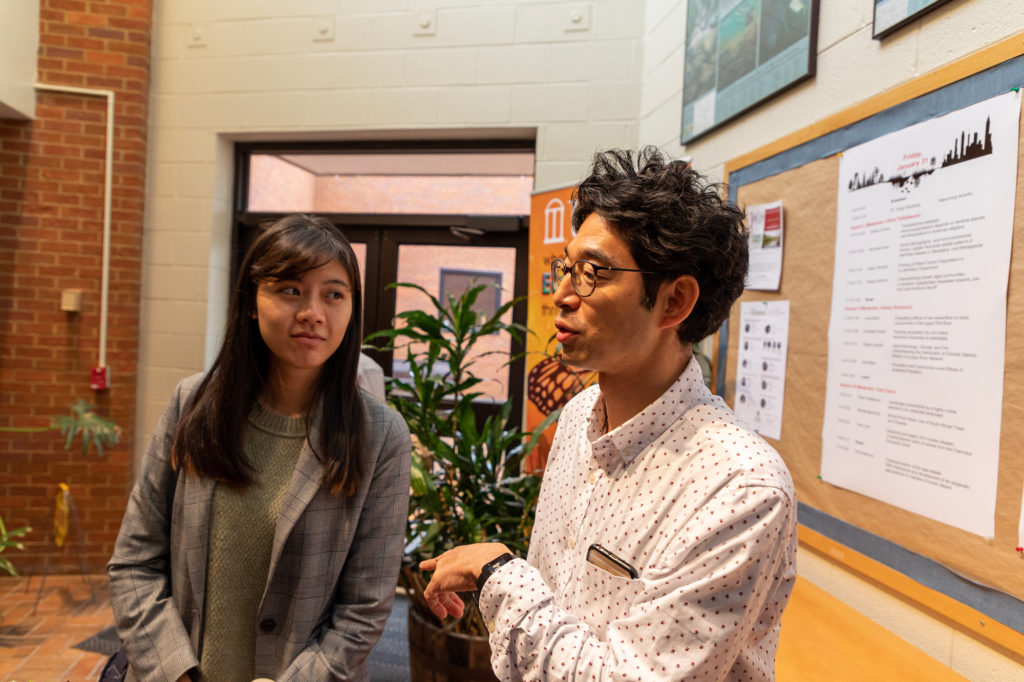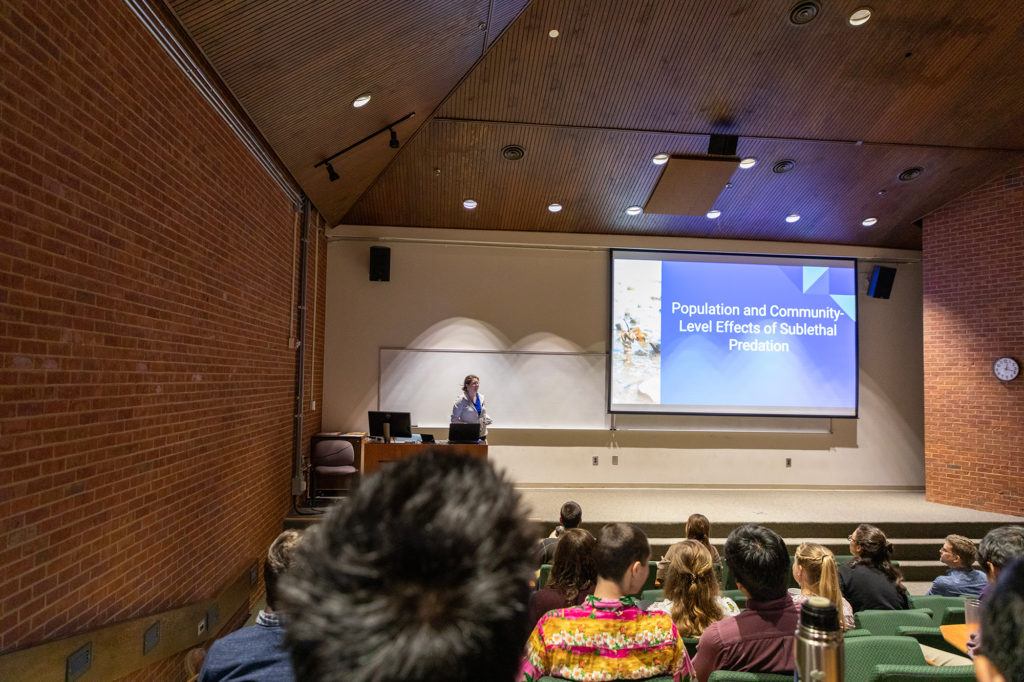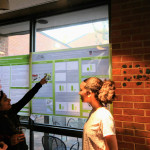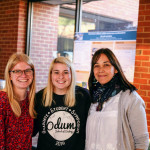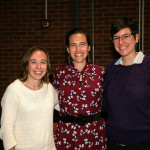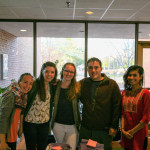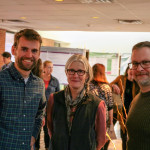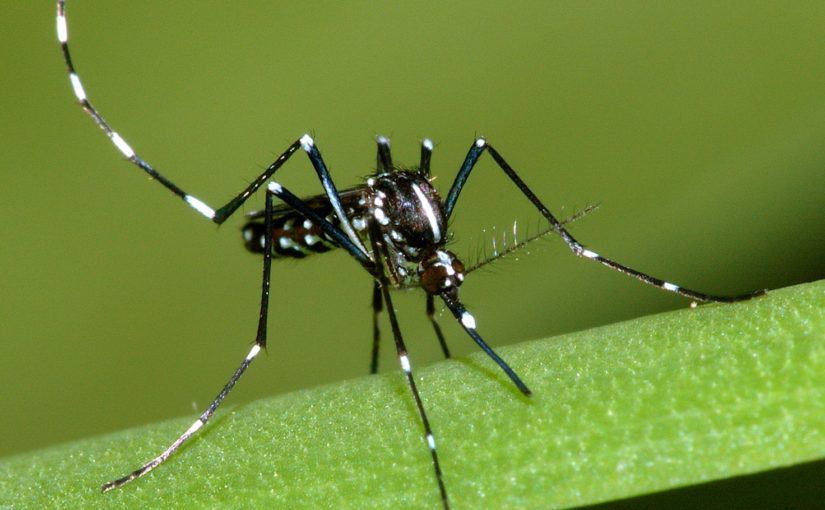The Odum graduate students organized the annual Graduate Student Symposium this past month, with undergraduate and graduate students presenting their independent research. Check out the photos below!
Author: Michelle Evans
Graduate Student Symposium 2020 :Jan 31 – Feb 1
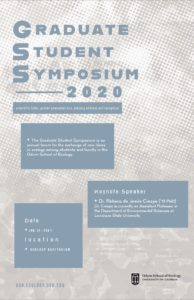 The annual Graduate Student Symposium (GSS) will take place January 31 – February 1, 2020. This symposium is organized by OSE graduate students to showcase research happening within the department. It includes an undergraduate poster session, rapid talks, and full-length talks.
The annual Graduate Student Symposium (GSS) will take place January 31 – February 1, 2020. This symposium is organized by OSE graduate students to showcase research happening within the department. It includes an undergraduate poster session, rapid talks, and full-length talks.
Each year features a keynote presentation by an Odum alumni. This year’s keynote speaker is Dr. Rebeca de Jesús Crespo, Phd, ’15, currently an Assistant Professor at Louisiana State University.
Please look at the program for the full schedule of events.
Photos from GSS 2019:
City sicker? A meta‐analysis of wildlife health and urbanization
Photo Credit: Maureen Murray
Urban development can alter resource availability, land use, and community composition, which, in turn, influences wildlife health. Generalizable relationships between wildlife health and urbanization have yet to be quantified and could vary across different measures of health and among species. We present a phylogenetic meta‐analysis of 516 comparisons of the toxicant loads, parasitism, body condition, or stress of urban and non‐urban wildlife populations reported in 106 studies spanning 81 species in 30 countries. We found a small but significant negative relationship between urbanization and wildlife health, driven by considerably higher toxicant loads and greater parasite abundance, greater parasite diversity, and/or greater likelihood of infection by parasites transmitted through close contact. Invertebrates and amphibians were particularly affected, with urban populations having higher toxicant loads and greater physiological stress than their non‐urban counterparts. We also found strong geographic and taxonomic bias in research effort, highlighting future research needs. Our results suggest that some types of health risks are more pronounced for wildlife in urban areas, which could have important implications for conservation.
Microclimate and larval habitat density predict adult Aedes Albopictus abundance in urban areas
The Asian tiger mosquito, Aedes albopictus, transmits several arboviruses of public health importance, including chikungunya and dengue. Since its introduction to the United States in 1985, the species has invaded more than 40 states, including temperate areas not previously at risk of Aedes-transmitted arboviruses. Mathematical models incorporate climatic variables in predictions of site-specific Ae. albopictus abundances to identify human populations at risk of disease. However, these models rely on coarse resolutions of environmental data that may not accurately represent the climatic profile experienced by mosquitoes in the field, particularly in climatically heterogeneous urban areas. In this study, we pair field surveys of larval and adult Ae. albopictus mosquitoes with site-specific microclimate data across a range of land use types to investigate the relationships between microclimate, density of larval habitat, and adult mosquito abundance and determine whether these relationships change across an urban gradient. We find no evidence for a difference in larval habitat density or adult abundance between rural, suburban, and urban land classes. Adult abundance increases with increasing larval habitat density, which itself is dependent on microclimate. Adult abundance is strongly explained by microclimate variables, demonstrating that theoretically derived, laboratory-parameterized relationships in ectotherm physiology apply to the field. Our results support the continued use of temperature-dependent models to predict Ae. albopictus abundance in urban areas.
Full text: https://doi.org/10.4269/ajtmh.19-0220
